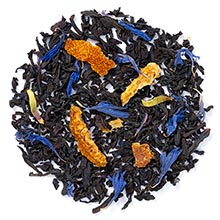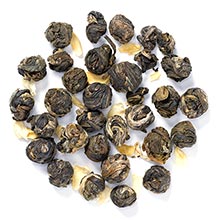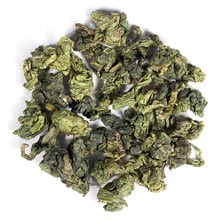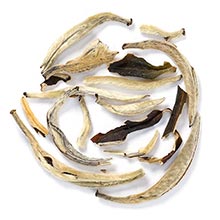Beginner's Guide to Everything Loose Tea: Teapots, Black Tea, Green Tea, and more
by Janelle Wazorick
March 15, 2022

When entering the world of loose tea in a teabag world, the novice can become easily overwhelmed at the amount of information out there: where does one even begin? Fear not: in this guide, you will learn the basics of loose tea to get you off the ground and soaring to a new world of tea possibilities.
Tools
Like anything else, making the perfect cup of tea requires a couple of easy-to-find tools. These tools can be found any place tea is sold, whether in a brick-and-mortar store or online. They can even be adapted with utensils you might already have in your kitchen.An Infuser
An infuser is a must-have for brewing loose tea (what fun is drinking a cup of tea and getting a mouthful of tea leaves?).An infuser allows you to effortlessly remove tea leaves from water, leaving only the brewed tea inside the cup, mug, or teapot. There are various kinds of infusers on the market. Basket infusers (a mesh basket that sometimes comes with handles to balance on a mug or teapot) are versatile and allow for even big leaf teas to fully expand.
There are also disposable options, such as Paper Tea Filter Bags, which are single-use and can be discarded when done for easy cleanup. Even something like a spaghetti strainer can work as an infuser in a pinch (as it serves the same purpose).
Keep in mind all of Adagio's teapots and most of their mugs come with infusers! More on those below.
Measuring Tool
In order to maintain a consistent cup of tea, the correct amount of tea leaves must be measured out. Typically, loose tea drinkers use a teaspoon since most teas usually require one or two teaspoons per cup. There are bigger spoons and scoops on the market that advertise the perfect amount of tea, but a standard teaspoon works well.Teapots and Mugs
If you want to make multiple cups of tea, then finding the right teapot is a must. Teapots come in a variety of shapes, sizes, and materials: single cup pot, multiple cup pot, yixing, ceramic, glass, metal, you name it!Meta teapots will retain heat best, but ceramic and glass teapots are more affordable and accessible. Glass teapots will lose heat as time goes on but are great at examining the brewed tea's color. Teapots are made for brewing loose tea come with a removable basket infuser that is made for that teapot, or occasionally a spout infuser that strains the tea as it pours out of the pot.
If you'd like to forgo the teapot altogether, you can also make a single cup of tea by brewing directly in a cup with an infuser.
What Teas Do I Try?
All true teas come from the camellia sinensis bush, but that doesn't mean that all teas taste a like. Depending on how the tea is grown, harvested, and processed, tea leaves can produce a variety of flavors that can suit almost any flavor preference. But with so many varieties of tea, the novice can become easily overwhelmed with which tea to make their first brew. If you're new to the world of tea, here are the basics for the tea types and some suggestions.Black Teas

Beginner's Suggestions: English Breakfast, Masala Chai, Earl Grey
Green Teas

Beginner's Suggestions: Jasmine Phoenix Pearls, Genmai Cha, Kukicha
Oolongs

Beginner's Suggestions: Formosa Oolong, Golden Flower, Ti Kuan Yin
White Teas

Beginner's Suggestions: White Peony, White Symphony, Silver Needle
On Brewing Temperatures and Times
Brewing tea is a simple process: add leaves to teapot, add hot water, wait for the tea to brew, and remove the leaves.However, the tricky part of making the perfect cup of tea is in the finer details, specifically in brewing temperature and brew time.
Certain teas (most notably green teas) are sensitive to higher temperatures, so they should be brewed at lower temperatures to preserve the flavor. If tea is over-brewed, the tea's bitterness will be extracted into the cup, creating a bitter cup of tea.
While it's recommended to follow the brewing instructions a particular tea comes with, there are some basic guidelines between the different types of tea:
To get the correct temperature every time, an electric variable-temperature kettle is highly recommended. Or, try the all-in-one tea kettle and teamaker, velociTEA.
These times and temperatures are great guidelines to start. Increase or decrease temperature/time based on your tastes! Experiment and have fun!
Happy brewing!